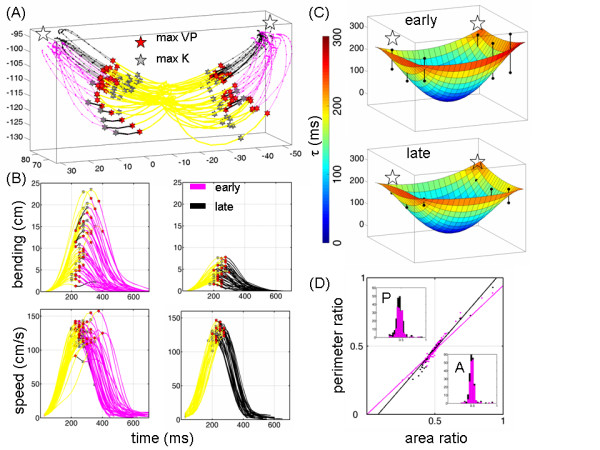Figure 8.

Violation and recovery of the geometric invariant symmetry when there was a mismatch between intended and actual paths. (A) Hand trajectories to targets in the absence of obstacles show the initial residual after-effects (magenta color) from the previous block when highly fast and curved automatic OB-avoidance motions had been executed to avoid obstacles. Such trajectory changes were not intended. The inertial forces still present in the arm seemingly overrode the intended abstract goals of reaching straight to the targets but eventually the performance converged to trajectories that were compliant with the goals (black) and the ratios were again 1/2. (b) Trajectory bending in the early (magenta) and late (black) trials of the same block and their corresponding speed profiles show the initial inconsistency of the (tau, delta) parameters which eventually became synchronized when the motion was once again automated. (C) The high variability of the spatial map of tau in the earlier trials contrasted with the stable consistent map in the late trials. The target locations in (A) are marked with stars on the map. (D) The invariant similarity of the area and the perimeter ratios broke down when tau was highly variable and there were unintended curved hand paths in place of a more desirable straight solution. Over the course of several trials the system recovered from this "perturbed" state and regained the invariant.
